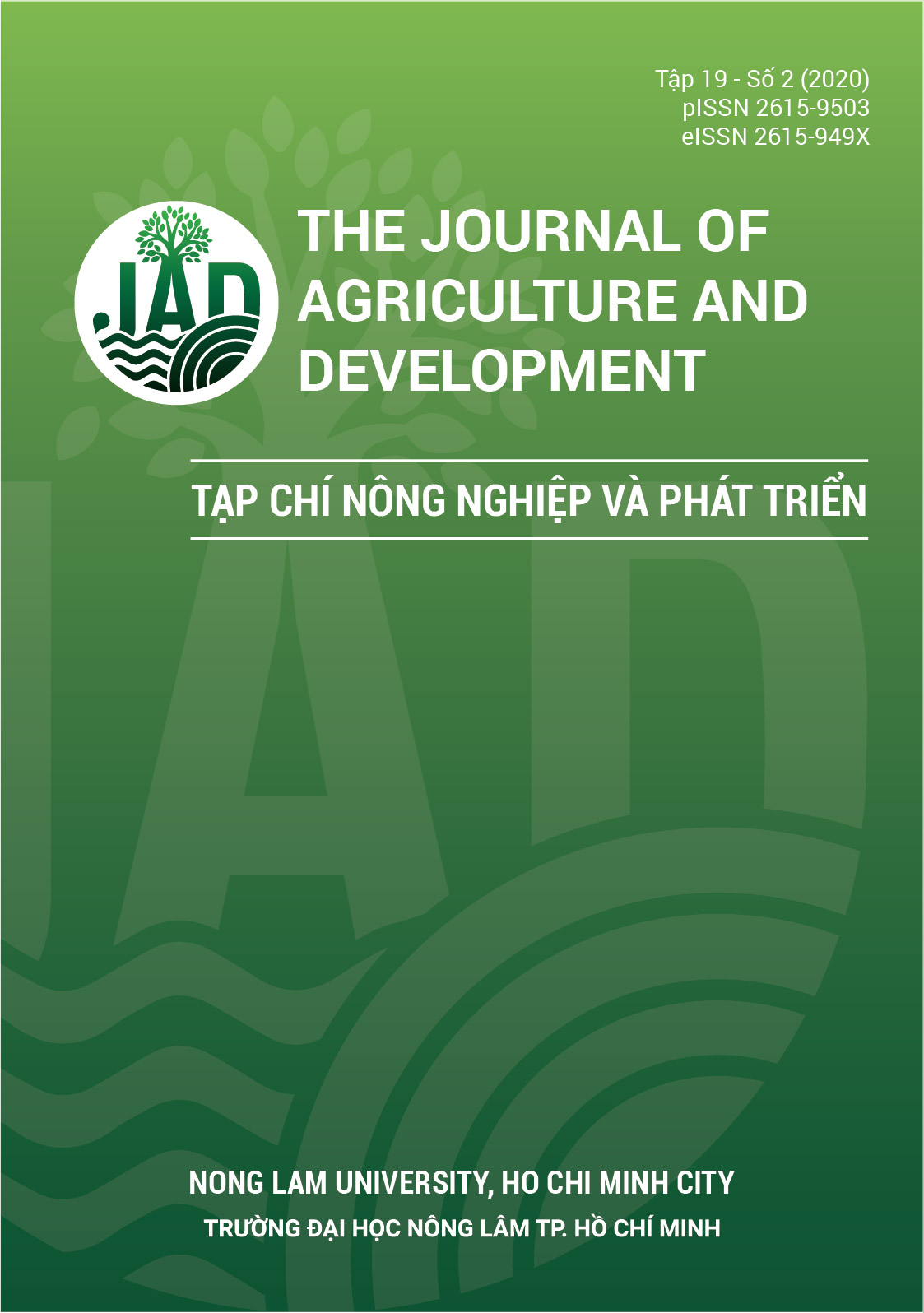Processing of fermented fruit juice from acerola (Malpighia glabraL.)
Main Article Content
Abstract
Fruit cider has high nutrition and often preserved cold after processing.The aroma and flavour characteristics of the original material enhancethe sensory of the cider. This study was carried on the acerolajuice which has the dry matter concentration of 18oBx, pH 4.0. Thefermentation was induced with the yeast content of 0.20% for 3 daysat room temperature. As a result, the obtained product had the drymatter concentration, the alcohol content, the vitamin C content andpH of 7.2±0.8oBx, 1.4% v/v, 581.2 mg% and 3.1, respectively.
Article Details
References
Bui, A. (2005).Fermentation technology applied in foodtechnology(2nd ed.). Ho Chi Minh City, Vietnam: National University Ho Chi Minh City.
Mathew, B., Datsugwai, M. S. S., David, E. S., & Harriet, U. (2017).Production of wine from fermentation of Grape (Vitis vinifera) and sweet orange (Citrus seninsis) juiceusingSaccharomyces cerevisiaeisolated from palmwine. International Journal of Current Microbiologyand Applied Sciences 6(1), 868-881. http://dx.doi.org/10.20546/ijcmas.2017.601.103
Nguyen, T. D., & Nguyen, H. T. (2007). Technology formanufacturing and testing ethyl alcohol (3rded.). HaNoi, Vietnam: Science and Technics Publishing House.
Oliveira, L. S., Rufino, M. S., Moura, C. F., Cavalcanti, F. R., Alves, R. E., & Miranda, M. R. (2010). The influence ofprocessing and long-term storage on the antioxidantmetabolism of acerola (Malpighia emarginata) purée. Brazilian Journal of Plant Physiology 23(2), 151-160. https://doi.org/10.1590/S1677-04202011000200007
Righetto, M. A., Netto, F. M., & Carraro, F. (2005). Chemical composition and antioxidant activity of juices frommature and immature acerola (Malpighia emarginataDC). Food Science and Technology International11 (4), 315-321. https://doi.org/10.1177/1082013205056785
Saranraj, P., Sivasakthivelan, P., & Naveen, M. (2017).Fermentation of fruit wine and its quality analysis: Areview. Australian Journal of Science and Technology 1(2), 85-97.
Simopoulos, A. P., & Gopalan, C. (2003). Plants in human health and nutrition policy. Basel, Switzerland:Karger. https://doi.org/10.1159/isbn.978-3-318-00954-5
Souza, P. A., Naik, P. A., Rao, S. C., Vyas, S., Palan,A. M., Cornelio, B., Shet, V. B., & Rao, C. V. (2017).Fermented fruit juice production using unconventionalseasonal fruits through batch fermentation. Journal of Microbiology, Biotechnology and Food Sciences 6(6),1305-1308. https://doi.org/10.15414/jmbfs.2017.6.6.1305-1308
Vendramini, A., & Trugo, L., (2000). Chemical composi-tion of acerola fruit (Malpighia punicifolia L.) at threestages of maturity. Food Chemistry 71(2), 195-198. https://doi.org/10.1016/S0308-8146(00)00152-7








